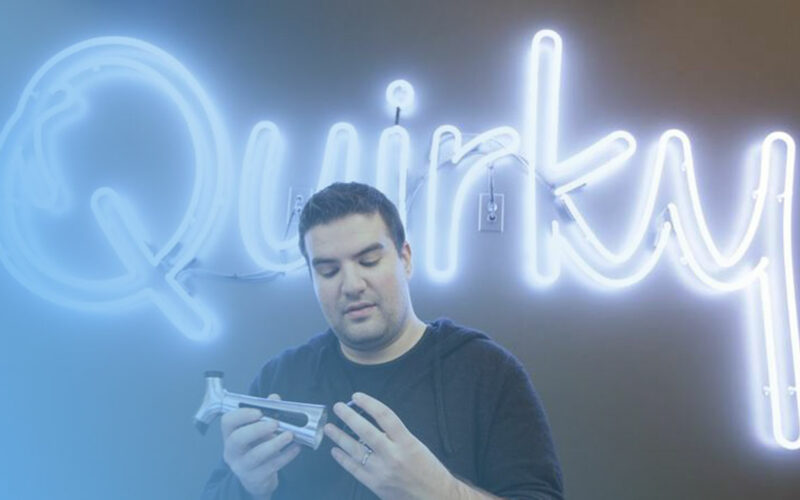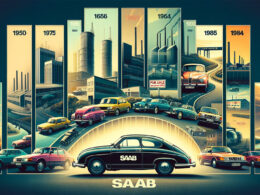In a landscape where innovation and creativity reigned supreme, Quirky emerged as a dazzling beacon, promising to transform everyday dreamers into seasoned inventors.
Yet, amidst the fervor of crowdsourced ideas and product pitches, this beacon dimmed into silence. What happened to Quirky, the platform that once energized amateur creators and captured the imagination of an industry?
Dive into the enigma of Quirky’s journey, exploring the labyrinthine path of entrepreneurial ventures and the pitfalls that can ensnare even the most visionary enterprises.
From the heights of collaboration in design to the depths of a financial crisis, the tale unfolds, providing insights that resonate with start-ups and innovators alike.
This article peels back the layers, revealing the intricate weave of venture capital funding, market strategies, and corporate restructuring.
By the conclusion, anticipate an enriched understanding of the volatile fusion between great ideas and the harrowing demands of the market—an invaluable lesson for every aspiring entrepreneur.
The Rise of Quirky
Founding and Early Success
Visionary Founder Ben Kaufman
Enter Ben Kaufman, the dude behind the curtain.
Young, bold, and kinda the human embodiment of a spark plug, he just wanted to shake things up. And he did. Got the ball rolling with Quirky, and it wasn’t long before people started talking.
Initial Funding and Investor Interest
Money started flowing in. Investors were tripping over themselves to get a piece of the pie. It was new, it was fresh, and it smelled like future success.
Business Model and Innovation
Crowdsourcing Invention

Picture this: a platform where you could just drop an idea, any idea, and watch it sprout wings.
That was Quirky’s bread and butter. Crowdsourcing, baby. It wasn’t just a buzzword; it was their whole game.
Community Engagement and Product Development
And the people? They were all over it. Engaging, voting, feeling like they were part of something big.
They were the judges and the jury, picking winners that Quirky would then bring to life. It was democracy meets design, meets… well, destiny.
Key Success Factors
Strong Community Base
Democratizing Invention
You know, back in the day, Quirky was like the hot new thing in town. They tossed the old rulebook out the window and said, “Hey, let’s make inventing a thing everyone can get in on.”
So, they swung the doors wide open, and people just came pouring in. They weren’t just users; they were like the lifeblood, pumping the heart of the whole shebang with ideas that were all shades of genius.
High User Engagement
And man, did folks get into it. It was like throwing a match into a pile of dry wood – boom. High user engagement?
That’s putting it mildly. It was more like a frenzy. A community-driven product design bash where everybody who was anybody wanted to play.
Strategic Partnerships
Collaboration with Retailers and Corporates
It wasn’t just a solo gig, no. Quirky got into bed with the big names, the retailers, the corporates.
They had this knack for making connections that made you go, “Wow, how’d they pull that off?” They had the charm, the products, and it was like watching a rock band team up with an orchestra. Unexpected but brilliant.
Notable Products and Innovations
From bendy power strips to modular storage units, Quirky wasn’t just about making stuff.
They were about making stuff that made you think, “Why didn’t I think of that?” It was innovation with a capital “I,” stuff that made life a tad easier, a bit more fun.
Challenges and Missteps
Over-Ambition and Lack of Focus
Over-Diversification of Products
But here’s the rub. You know that kid who’s got his fingers in too many pies? That was Quirky.
They were churning out products like a factory on overdrive. And not just any products, but everything under the sun. It was a classic case of business overexpansion risks. A wild party, until it wasn’t.
Failure to Iterate and Refine
And iterating? Refining? Nah, they were too busy pumping out the new stuff to pause and polish the old.
That’s the thing with crowdsourced products – it’s a hit or a miss, and without that crucial fine-tuning, some products just didn’t make the cut.
Disconnect with Consumers
Misalignment with Market Needs
So, what happened to Quirky? Folks started scratching their heads. The products were cool, sure, but did they really need them?
It was like they were shooting arrows in the dark, hoping to hit the bullseye of market needs and… kinda missing.
Quality Control Issues
And let’s not even start on the quality. Remember the old saying, “Jack of all trades, master of none”?
They spread themselves thinner than a dollar store napkin, and it showed. A few slip-ups here, a couple of letdowns there, and trust started to slip through their fingers.
Brand Identity Crisis
Lack of Clear Brand Message
Confusion Over Company’s Mission
So, diving into the whole Brand Identity Crisis saga. You see, Quirky started blurring their own lines. What were they about, really?
First, they were this cool inventor’s playground, then suddenly, it’s like they were trying to be everything to everyone. Classic case of mission drift, if you ask me.
Inconsistent Product Line
The products? All over the place. One day it’s this funky kitchen gadget, the next it’s some gizmo for your garage. People started to get the vibe that Quirky was just tossing out stuff, hoping something would stick. Brand consistency? Nope. It was more like, “let’s throw paint at the wall and call it art.”
The Downfall of Quirky
Financial Troubles
Unsustainable Business Model
Alright, here’s the tea on the financial mess. It turns out, making a million things at once costs a ton of money.
Who knew, right? Quirky’s approach was like trying to sprint before you can crawl, and those dollars were burning faster than a tire at a drag race.
Bankruptcy and Closure
Fast-forward a bit and boom, the money’s gone. Like a ghost town.
Just when you thought they might pull off a miracle, the whole thing went belly up. Bankruptcy was the nail in the coffin, and that was all she wrote for Quirky.
Lessons Learned
Importance of Product-Market Fit
Here’s a takeaway for free – fit your product to the market, not the other way around.
Quirky had cool stuff, but cool doesn’t always cut it. You’ve got to make what people actually want and need. That’s the ticket.
Balancing Innovation with Practicality
And innovation, it’s gotta have its feet on the ground. Quirky was living in the clouds, and when you’re up that high, it’s a long way down.
You’ve got to balance those big dreams with what’s doable, mix a little practical magic in with the pie-in-the-sky ideas.
FAQ On What Happened To Quirky
Why did Quirky fail?
The collapse was a tapestry of complexity, woven from the threads of overexpansion and mismanaged finances. Amid the push for rapid growth, Quirky struggled to balance inventor community engagement with sustainable business models.
Cash flow bottlenecks choked the pipeline from idea commercialization to market reality.
What was Quirky’s business model?
Quirky’s model was a brilliant spark of crowdsourcing—a platform inviting ideas from anyone, turning the best into products.
Revenue was the byproduct of community-driven innovation, with profits shared amongst inventors and contributors—a startup ecosystem fueled by the democratization of invention.
How did Quirky support inventors?
Support came in multifaceted ways: nurturing product development through expert guidance, providing an avenue for patent submissions, and leveraging a community for feedback and improvements.
Inventors found themselves amidst a nurturing crowdsourced innovation platform that aligned creativity in business with consumer electronics production.
Who was behind Quirky?
At the helm was Ben Kaufman, a young entrepreneur with a vision of tapping into undiscovered inventing potential. Kaufman steered the Quirky ship with a zest for tech gadget markets, fostering a collaboration in design and democratizing the path from concept to consumer product creation.
What were some of Quirky’s successful products?
Quirky’s portfolio showcased gems like the Pivot Power strip, an adjustable electrical power strip, and the Aros, a smart air conditioner. These products reflected the ingenious synergy between user-generated design and Quirky’s touch in refining and market strategies.
Did Quirky have any significant partnerships?
Indeed, strategic alliances were forged, like those with GE Appliances, crafting a future of smart devices. Partnerships with retail giants gave Quirky inventions a physical presence, hinting at a promising horizon that sadly, didn’t last in the tumultuous tech startup climate.
How did the market react to Quirky?
Initial reactions blazed with enthusiasm—Quirky inventions stood as testaments to innovation. However, as fiscal sustainability was questioned, reactions wavered. The awaited revolution in crowdsourced product development faced the harsh truth of economic viability.
When did Quirky file for bankruptcy?
The turning point was 2015 when Quirky’s narrative spiraled into Chapter 11 bankruptcy proceedings. A moment that marked the crescendo of business failure woes, as the model of invention commercialization faced its sternest test—a testament to the fragility within the startup ecosystem.
What happened to Quirky’s intellectual property?
Post-bankruptcy, the fate of Quirky’s intellectual property rights hung in limbo until being acquired by investment firms.
These entities looked to salvage what they could from the remnants, hoping to breathe new life into the innovative products that once dotted the Quirky catalogue.
Is Quirky still operational today?
Quirky’s beat has indeed been revived, albeit at a different rhythm. Under new ownership, the company re-emerged, focusing on a more scaled-back and strategic approach to product invention process—this time, perhaps learning from the rollercoaster of its tumultuous past.
Conclusion
In closing, the tale of Quirky unfurls a canvas streaked with innovation’s highs and the sobering hues of an economic downturn. A symbol of crowdsourced creativity abruptly muted. We’ve delved deep, dissecting the climax of a once-thriving startup ecosystem; we’ve picked apart the quandary, what happened to Quirky?
Sifting through the remnants, the narrative stands as a caution and a beacon—an emblematic story echoing in entrepreneurial ventures.
The journey from magnified promise to somber Chapter 11 bankruptcy resonates, reminding that the marriage of brilliant ideas and market success is delicate, often tumultuous.
As the final notes of Quirky’s symphony fade, the design of its saga instructs keenly. It’s a testament to resilience, a provocation to act judiciously, and a call to innovate responsibly.
A legacy penned in venture capital ledgers and the dreams of inventors, Quirky’s chronicle endures, a stark silhouette against the vast backdrop of business trials and aspiration.
- Professional Video Editing with Apps Like Kinemaster - April 29, 2024
- Benefits of Working with a Professional Web Development Company For Your Website - April 29, 2024
- What’s Odoo ERP And How To Integrate It - April 29, 2024









